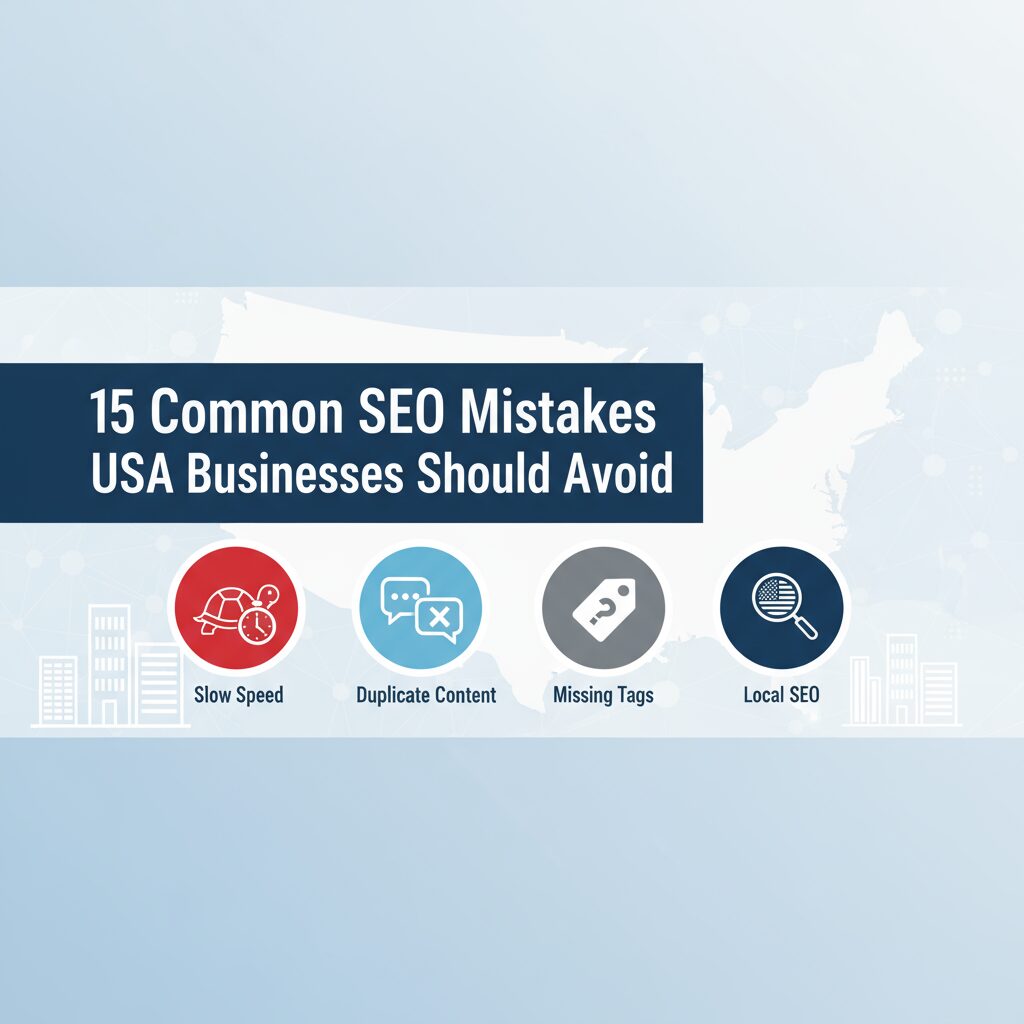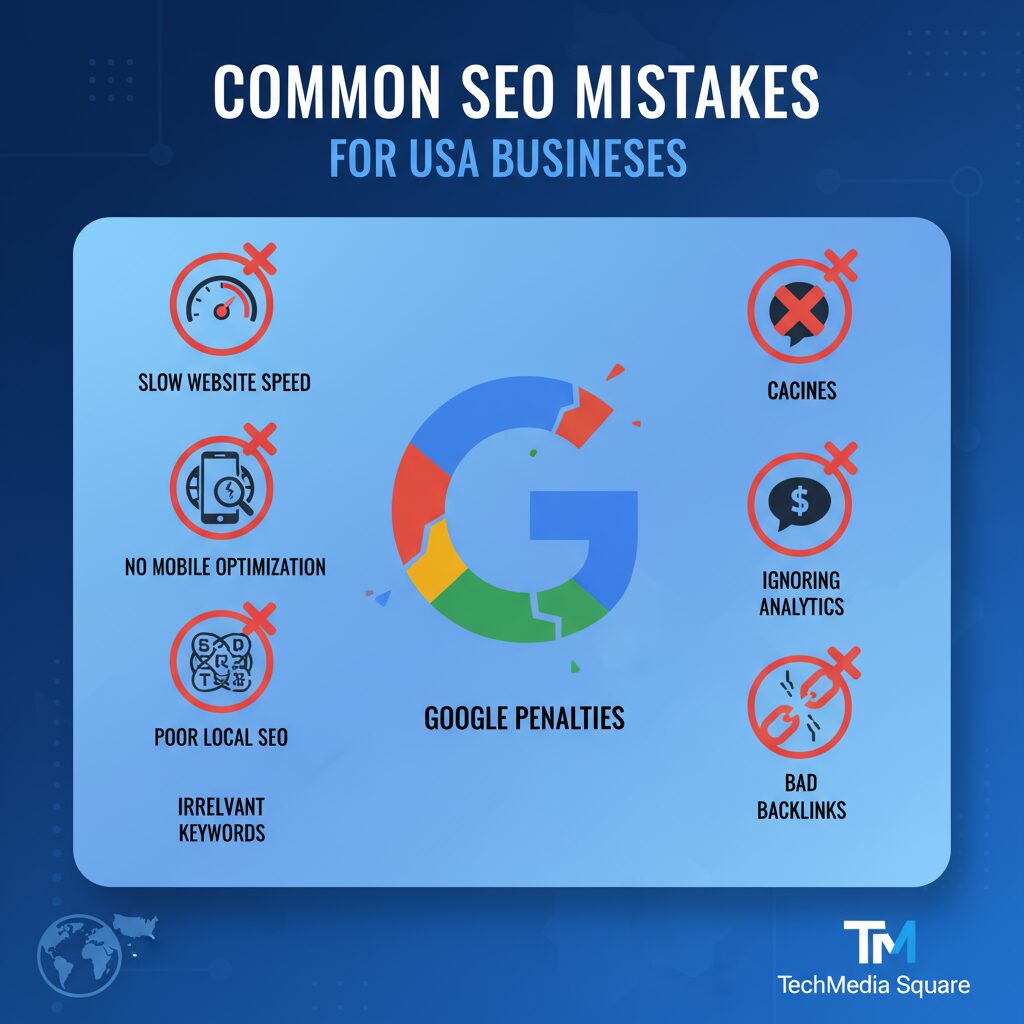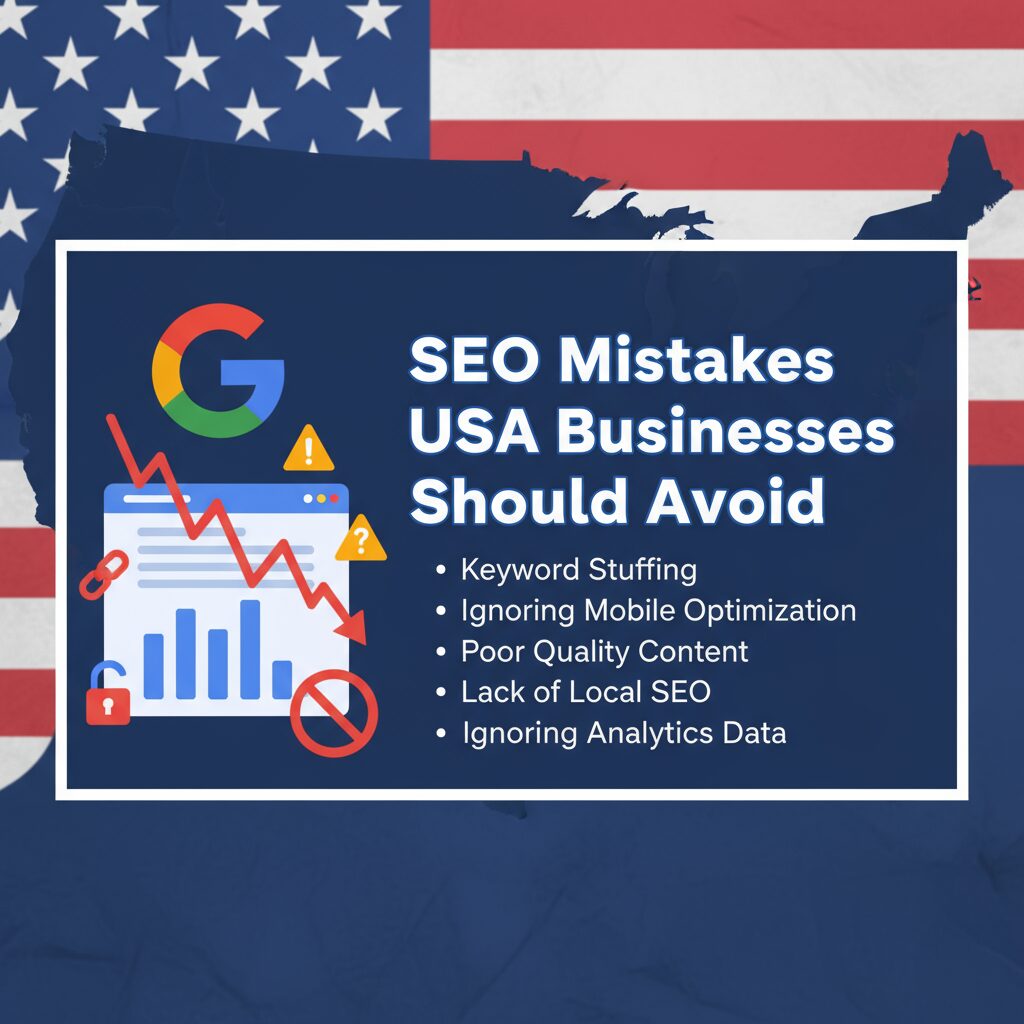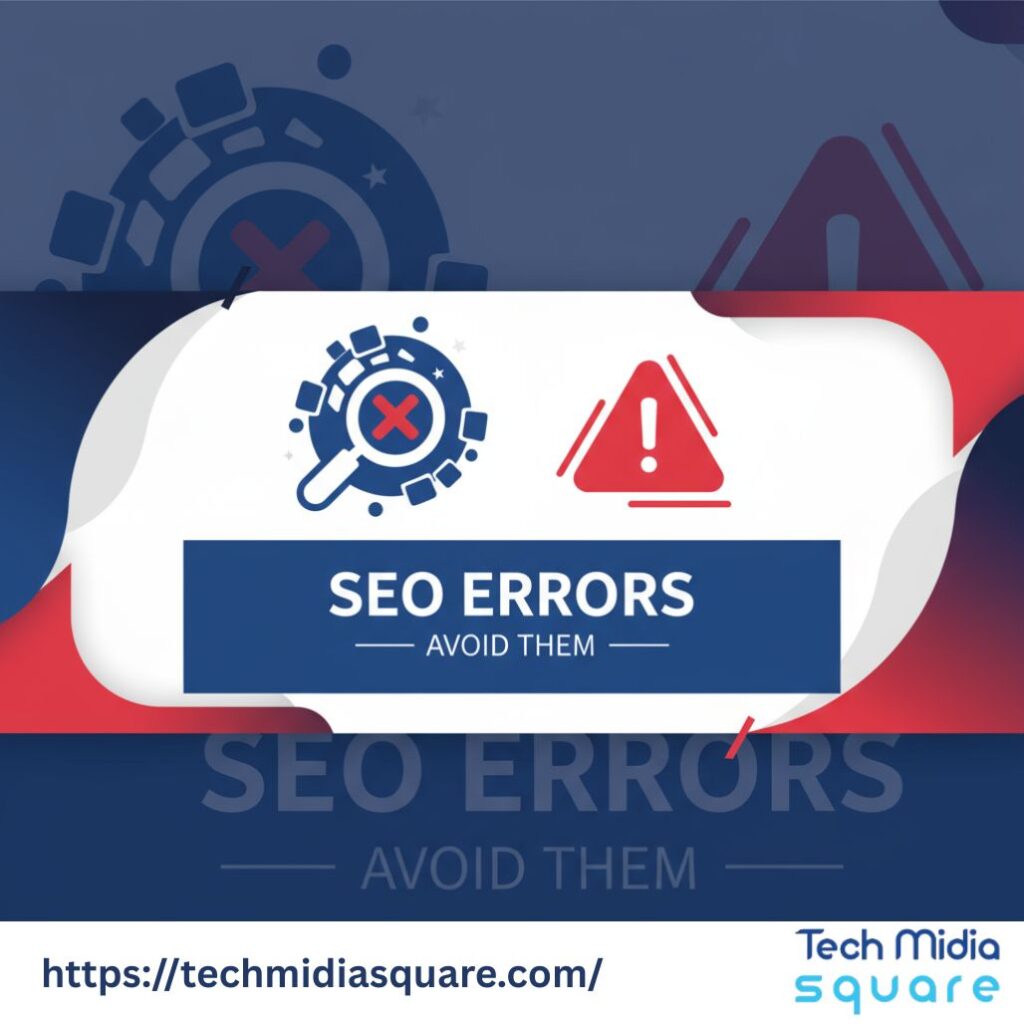15 Common SEO Mistakes USA Businesses Should Avoid
Avoid These 15 Costly SEO Mistakes: A Guide for USA Businesses
In the fast-evolving digital landscape of 2025, SEO remains a cornerstone for online success, especially for USA businesses. However, many companies continue to fall into avoidable traps that impede their search engine rankings and overall digital visibility. Understanding and steering clear of these SEO mistakes can significantly enhance your website’s performance and customer reach.
This blog explores 15 common SEO mistakes that USA businesses should avoid in 2025, focusing on actionable insights to improve SEO effectiveness. Keywords like SEO Mistakes and SEO appear in key headings and throughout the blog for optimized search relevance. The information is tailored for the US market and draws from fresh industry trends and best practices.
What Are SEO Mistakes and Why Avoid Them?
SEO mistakes refer to errors or oversights in optimizing your website that can harm search engine rankings, diminish user experience, or result in penalties. Avoiding these pitfalls helps you maintain a strong presence on Google and other search engines, drive targeted traffic, and convert visitors into customers.
 1. Keyword Stuffing
1. Keyword Stuffing
One of the most frequent and damaging SEO mistakes is keyword stuffing—overusing keywords unnaturally in page content. While keywords signal relevance to search engines, excessive repetition makes content hard to read and triggers Google penalties.
How to Fix: Use keywords thoughtfully and naturally. Incorporate them in titles, headings, meta descriptions, and body text without compromising readability or user engagement.
2. Neglecting Search Intent
Ignoring the reason behind user searches leads to content that fails to satisfy visitor needs, reducing rankings and engagement. Search intent focuses on what users want when typing a query—informational, transactional, or navigational.
How to Fix: Use tools and competitor analysis to understand the intent behind keywords. Tailor content to answer specific user questions or needs clearly.
3. Poor Site Speed Optimization
Website loading speed significantly impacts SEO and user experience. Slow sites lead to high bounce rates and lower rankings.
How to Fix: Optimize images, use efficient hosting, enable caching, and minimize code to boost site speed. Use Google’s PageSpeed Insights as a benchmark.
4. Lack of Mobile-Friendliness
With mobile-first indexing fully implemented, a website not optimized for mobile devices can lose rankings and visitors.
How to Fix: Adopt responsive design, simplify navigation, and test mobile usability regularly to ensure smooth user experiences across devices.
5. Duplicate Content
Duplicate or very similar content across pages confuses search engines about which page to rank, often resulting in all pages ranking poorly.
How to Fix: Use canonical tags, ensure original content, and avoid copying content across multiple pages.
6. Skipping Meta Tags (Title and Description)
Missing or poorly written meta titles and descriptions reduce click-through rates and make it harder for search engines to understand page context.
How to Fix: Write unique, keyword-rich meta titles and descriptions for every page to improve visibility and attraction in SERPs.
7. Ignoring Local SEO
For USA businesses especially, neglecting local SEO reduces chances to appear in “near me” searches or local map packs.
How to Fix: Optimize Google Business Profile, use location-specific keywords, and create local content.
 8. Poor Internal Linking
8. Poor Internal Linking
Failing to link relevant pages internally weakens site architecture, hampers crawler navigation, and reduces the flow of link equity.
How to Fix: Develop an internal linking strategy that connects related content naturally and helps users find more information.
9. Using Irrelevant or Over-Optimized Anchor Text
Using generic anchor texts like “click here” or stuffing exact-match keywords excessively can harm SEO and user experience.
How to Fix: Use descriptive, varied anchor text that adds value and context for users and search engines.
10. Neglecting Structured Data (Schema Markup)
Structured data helps search engines display rich results like reviews, FAQs, and event details. Missing this can limit SERP visibility.
How to Fix: Implement schema markup on key pages to enhance listings and improve click-through rates.
11. Overlooking Image Optimization
Large or untagged images slow site speed and miss chances to appear in image search results.
How to Fix: Use optimized image formats, compress files, and always include descriptive alt text.
12. Not Tracking SEO Performance
Not monitoring SEO metrics leaves businesses unaware of what strategies work or fail, impeding growth.
How to Fix: Use Google Analytics, Search Console, and SEO tools to track rankings, traffic, and user behavior.
13. Poor Handling of Redirects and Canonical Tags
Mismanaged redirects and canonical tags create confusion for search engines, dilute link equity, and cause indexing issues.
How to Fix: Use 301 redirects for permanent changes, avoid redirect chains, and apply canonical tags correctly to prevent duplicate content.
14. Publishing Thin or Low-Quality Content
Pages with little or unhelpful content perform poorly and don’t satisfy user needs.
How to Fix: Ensure every page has substantial, high-quality, authoritative content tailored to your audience.
15. Ignoring AI-Driven Search Trends (Answer Engine Optimization)
With AI answering queries directly, not optimizing content for featured snippets, FAQs, and conversational queries results in lost traffic opportunities.
How to Fix: Use natural language, FAQ sections, and conversational content targeting featured snippet opportunities.
Key Changes and Additions in SEO for USA Businesses in 2025
-
AI Search Optimization: Google’s AI and conversational search features increase the importance of content structured for voice and AI answers.
-
Mobile-First and Page Experience: Mobile usability and Core Web Vitals remain critical ranking factors.
-
Enhanced Local SEO: Local searches and “near me” queries continue to grow, requiring deeper local content strategies.
-
Schema and Rich Snippets: Structured data’s role is expanding in driving visibility.
-
Security and Privacy: HTTPS and user privacy transparency affect trust and SEO rankings.
 Trending FAQs: SEO Mistakes for USA Businesses in 2025
Trending FAQs: SEO Mistakes for USA Businesses in 2025
What are the most common SEO mistakes USA businesses make?
Common mistakes include keyword stuffing, ignoring local SEO, slow site speed, duplicate content, and missing meta tags.
How can I avoid keyword stuffing but still optimize for SEO?
Focus on natural keyword use—include them in titles, headers, and content without overusing or awkward repetition.
Why is local SEO important for USA businesses?
Local SEO helps businesses appear in local searches and maps, driving highly targeted traffic from nearby customers.
How does AI affect SEO strategies in 2025?
AI prioritizes helpful, conversational content and direct answers, making schema markup and FAQ optimization essential.
What role does site speed play in SEO?
Site speed affects user experience and rankings; faster sites attract and retain visitors better.
Conclusion
Avoiding these 15 common SEO mistakes can greatly enhance the visibility and success of USA businesses in 2025. Continuous learning, adapting to new SEO trends, and focusing on user experience are crucial. For expert SEO services tailored to the US market, visit techmidiasquare.com/seo-services.
Focusing efforts on avoiding these SEO mistakes ensures higher rankings, increased traffic, and stronger online growth.



